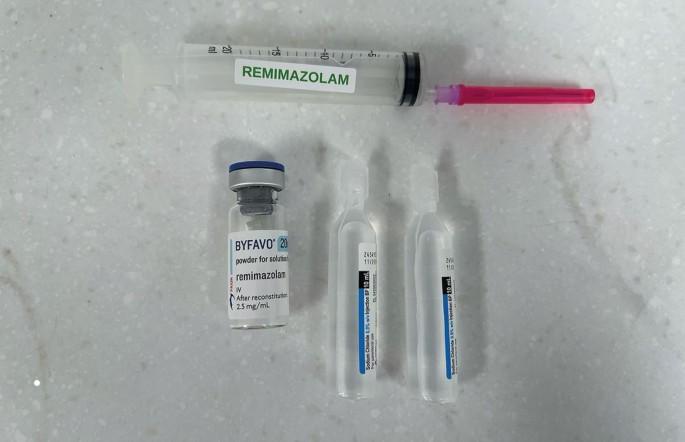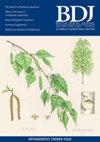A multi-site service evaluation on remimazolam for dental conscious sedation
IF 2.3
4区 医学
Q2 DENTISTRY, ORAL SURGERY & MEDICINE
引用次数: 0
Abstract
Background Remimazolam is a novel ultra-short-acting benzodiazepine which shows a high efficacy and safety profile for medical procedures, such as endoscopy; however, its use in dentistry is relatively new and lacks an evidence base. Aims The service evaluation aimed to establish the safety and efficacy of remimazolam as a conscious sedation agent in dental outpatient settings since its introduction into two secondary care sedation and special care dental services in 2023. Method Retrospective data collection of remimazolam sedation cases from April 2023 to April 2024 was carried out. Results The success rate of 111 remimazolam sedation cases was 97%. The mean interval between sedation start time and beginning of treatment was 2-4 minutes, while the mean time from the last administered dose to patient discharge was 24 minutes. The mean dose of remimazolam administered was 11.9 mg, with a range of 1.5-35 mg. Patients required a mean of four additional doses, with a mean interval of 5.7 minutes between top-ups. The majority of cases (82.9%) resulted in Ellis scores of 1 or 2. Five complications were documented: three cases of desaturation, one case of disinhibition and one case of post-operative hypertension, none of which necessitated flumazenil reversal. Conclusion This service evaluation provided promising insights into the potential safety profile and effectiveness of remimazolam for dental sedation in two secondary care settings; however, larger-scale studies are necessary to substantiate these findings. This is a rapidly emerging area of sedation practice that is likely to see an influx of research and development in the near future.

雷马唑仑用于牙齿清醒镇静的多站点服务评价。
雷马唑仑是一种新型的超短效苯二氮卓类药物,在内窥镜检查等医疗程序中具有很高的疗效和安全性;然而,它在牙科中的应用相对较新,缺乏证据基础。目的服务评估旨在确定remimazolam自2023年被引入两个二级护理镇静和特殊护理牙科服务以来作为牙科门诊有意识镇静剂的安全性和有效性。方法回顾性收集2023年4月至2024年4月雷马唑仑镇静病例资料。结果111例雷马唑仑镇静成功率为97%。镇静起始时间至治疗开始的平均间隔时间为2 ~ 4分钟,最后一次给药至患者出院的平均时间为24分钟。给予雷马唑仑的平均剂量为11.9 mg,范围为1.5-35 mg。患者平均需要四次额外剂量,每次补充的平均间隔为5.7分钟。大多数病例(82.9%)Ellis评分为1或2分。记录了5例并发症:3例去饱和,1例去抑制,1例术后高血压,没有一例需要氟马西尼逆转。结论本服务评价为雷马唑仑在两种二级医疗机构中用于牙科镇静的潜在安全性和有效性提供了有希望的见解;然而,需要更大规模的研究来证实这些发现。这是一个快速发展的镇静实践领域,在不久的将来可能会看到大量的研究和开发。
本文章由计算机程序翻译,如有差异,请以英文原文为准。
求助全文
约1分钟内获得全文
求助全文
来源期刊

British Dental Journal
医学-牙科与口腔外科
CiteScore
3.10
自引率
15.40%
发文量
1096
审稿时长
4-8 weeks
期刊介绍:
The role of the BDJ is to inform its readers of ideas, opinions, developments and key issues in dentistry - clinical, practical and scientific - stimulating interest, debate and discussion amongst dentists of all disciplines. All papers published in the BDJ are subject to rigorous peer review.
 求助内容:
求助内容: 应助结果提醒方式:
应助结果提醒方式:


